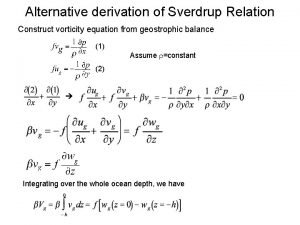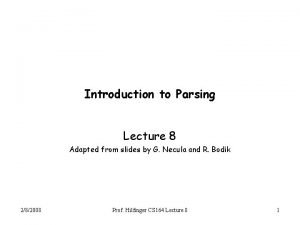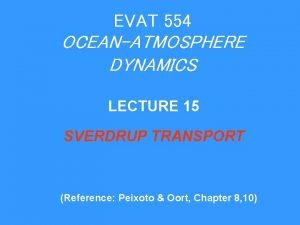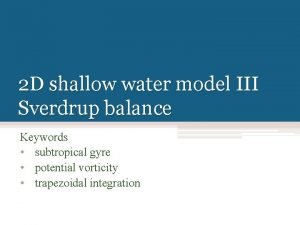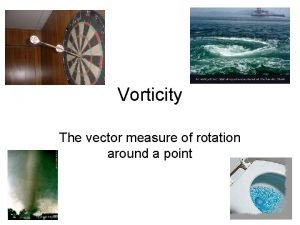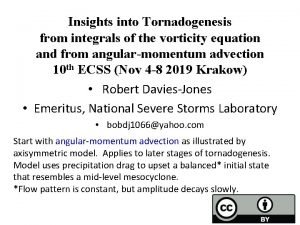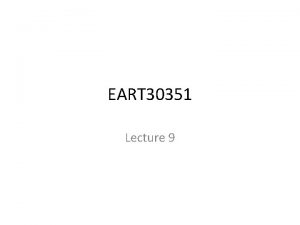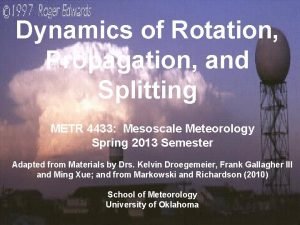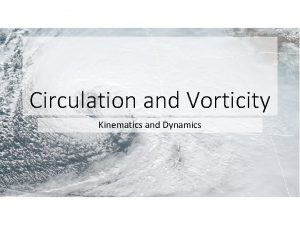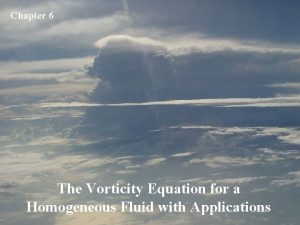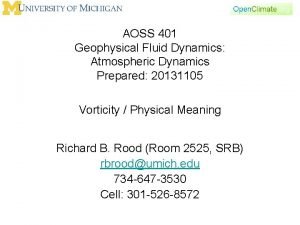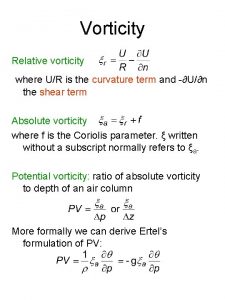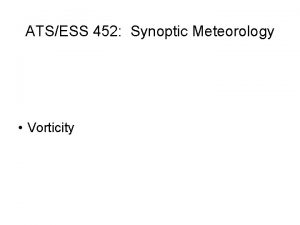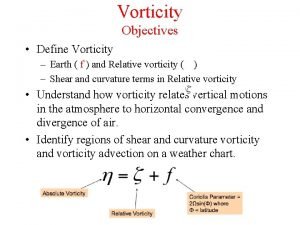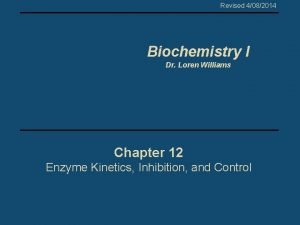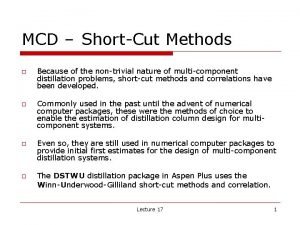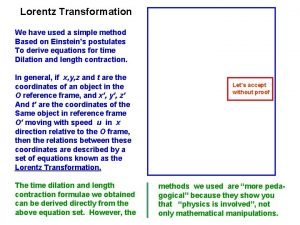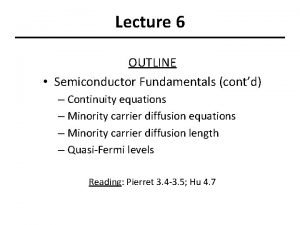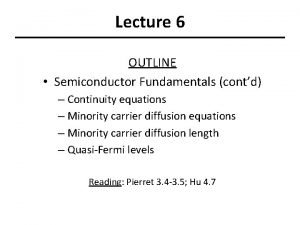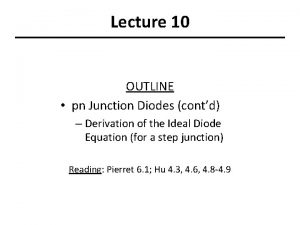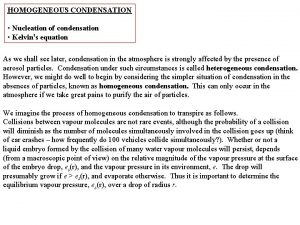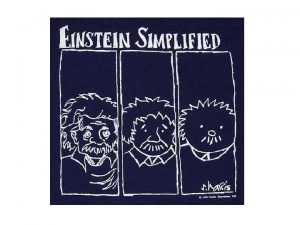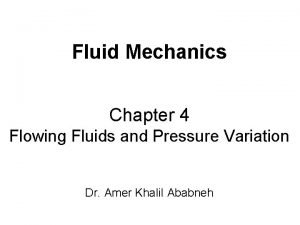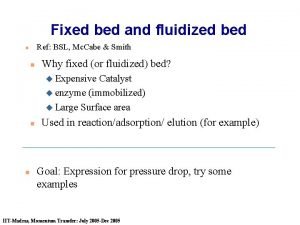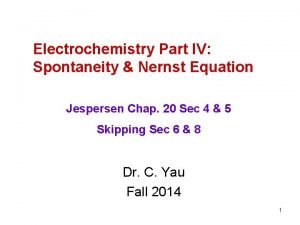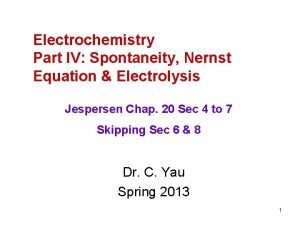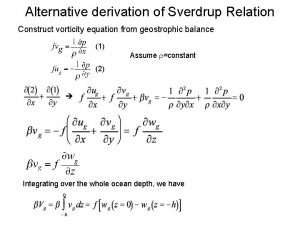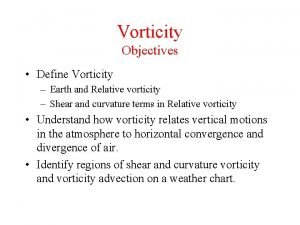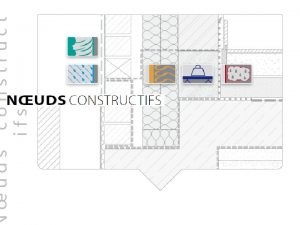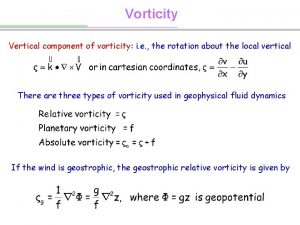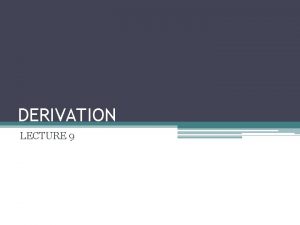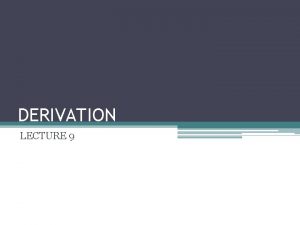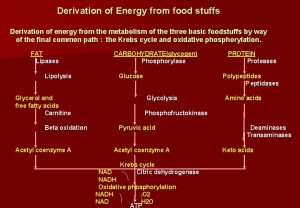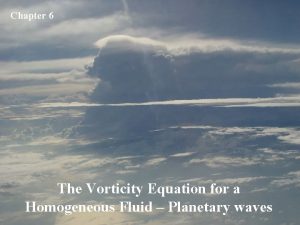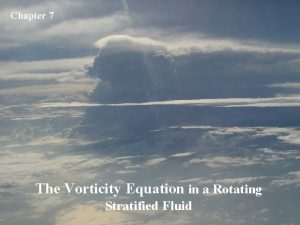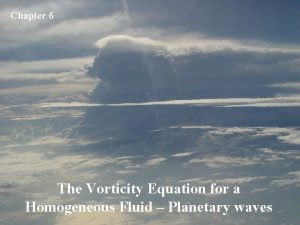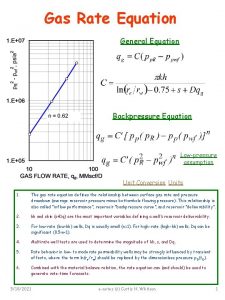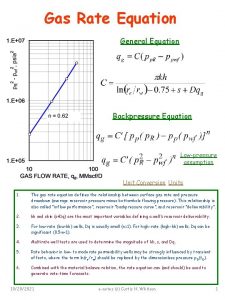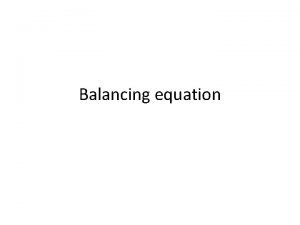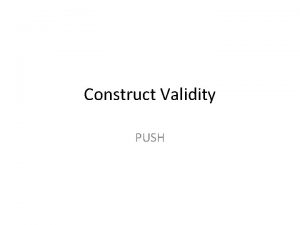Alternative derivation of Sverdrup Relation Construct vorticity equation



























- Slides: 27

Alternative derivation of Sverdrup Relation Construct vorticity equation from geostrophic balance (1) Assume =constant (2) Integrating over the whole ocean depth, we have

where is the entrainment rate from the surface Ekman layer at 45 o. N The Sverdrup transport is the total of geostrophic and Ekman transport. The indirectly driven Vg may be much larger than VE.

Vorticity In physical oceanography, we deal mostly with the vertical component of vorticity, which is notated as For a rotating solid object, the vorticity is two times of its angular velocity Relative vorticity is vorticity relative to rotating earth Absolute vorticity is the vorticity relative to an inertia frame of reference (e. g. , the sun) Planetary vorticity is the part of absolute vorticty associated with Earth rotation f=2 sin , which is only dependent on latitude. Absolute vorticity =Relative vorticity + Planetary Vorticity

FIGURE 7. 12 Vorticity. (a) Positive and (b) negative vorticity. The (right) hand shows the direction of the vorticity by the direction of the thumb (upward for positive, downward for negative). From Talley et al. (2011, DPO)

Vorticity Equation From horizontal momentum equation, , (1) (2) Taking , we have


Shallow Water Equation Constant and uniform density , incompressible Aspect ratio hydrostatic

Integrating the hydrostatic equation Use the boundary condition at the sea surface, z= , p=0 The horizontal pressure gradient is independent of z Therefore, it is consistent to assume that the horizontal velocities remain to be independent of z if they are so initially.

Assume that at the bottom of the sea, i. e. , z=-h. B At the sea surface, z= ,

Let be the total depth of water, we have The system of the shallow water equations

Vorticity Equation for the Shallow Water System >> x, y No twisting No baroclinicity Main mechanism: Vortex stretching

Potential Vorticity Conservation For a layer of thickness H, consider a material column We get or Potential Vorticity Equation


Alternative derivation of Sverdrup Relation Construct vorticity equation from geostrophic balance (1) Assume =constant (2) Integrating over the whole ocean depth, we have

where is the entrainment rate from the surface Ekman layer at 45 o. N The Sverdrup transport is the total of geostrophic and Ekman transport. The indirectly driven Vg may be much larger than VE.

In the ocean’s interior, for large-scale movement, we have the differential form of the Sverdrup relation i. e. , <<f

Have vorticity input No vorticity dissipation Cannot hold everywhere in a closed basin Friction has to be important somewhere within the basin FIGURE 7. 13 Sverdrup balance circulation (Northern Hemisphere). Westerly and trade winds force Ekman transport, creating Ekman pumping and suction and hence Sverdrup transport. See also Figure S 7. 12. From Talley et al(2011, PDO)

For most of the basin Question What causes the strong narrow currents on the west side of the ocean basin? The westward Intensification

Westerly winds in north, easterly winds in south Ekman effect drives the water to the center, Increase sea level generates anticyclonic geostrophic currents Internal friction (or bottom Ekman layer) generate downslope cross-isobaric flow, which balance the wind-driven Ekman transport From Knauss, 1997 What would happen if there were no β effect (i. e. on a fplane)?

Vorticity Balance on a f-Plane Vorticity Equation: Vorticity generated by wind stress is consumed by local friction

Stommel’s Model Rectangular ocean of constant depth Surface stress is zonal and varies with latitude only Steady ocean state Simple friction term as a drag to current Vorticity balance: Sverdrup balance +friction Flow patterns in this ocean for three conditions: (1) non-rotating ocean (f=0) (2) f-plane approximation (f=constant) (3) -plane approximation (f=fo+ y)

f-plane

Wind stress ( ) + friction ( ) =0 Negative vorticity generation Positive vorticity generation

The effect Generate negative vorticity Generate positive vorticity

In the west, water flows northward Wind stress ( ) + Planetary vorticity ( ) + Friction ( ) = 0 In the east, water flows southward Wind stress ( ) + Planetary vorticity ( ) + Friction ( ) = 0 Friction (W) > Friction (E)

Non-rotation Ocean, f=0

If f is not constant, then F is dissipation of vorticity due to friction
 Sverdrup balance equation
Sverdrup balance equation Leftmost derivation and rightmost derivation
Leftmost derivation and rightmost derivation Sverdrup transport
Sverdrup transport Sverdrup balance
Sverdrup balance Absolute vorticity
Absolute vorticity Streamwise vorticity
Streamwise vorticity Vorticity formula
Vorticity formula Streamwise vorticity
Streamwise vorticity Vorticity and circulation
Vorticity and circulation Vorticity formula
Vorticity formula Vertical answer
Vertical answer What is relative vorticity
What is relative vorticity What is vorticity in meteorology
What is vorticity in meteorology Define vorticity
Define vorticity Significance of michaelis menten equation
Significance of michaelis menten equation Winn equation
Winn equation Inverse lorentz transformation
Inverse lorentz transformation Derivation of continuity equation in semiconductor
Derivation of continuity equation in semiconductor The equation of continuity is
The equation of continuity is Ideal diode equation derivation
Ideal diode equation derivation Homogeneous condensation
Homogeneous condensation Derive lorentz transformation equation
Derive lorentz transformation equation Fluid mechanics bernoulli equation
Fluid mechanics bernoulli equation Ergun equation derivation
Ergun equation derivation Ergun equation derivation
Ergun equation derivation Nernst equation for galvanic cell
Nernst equation for galvanic cell Nernst equation derivation
Nernst equation derivation Langevin-debye equation derivation
Langevin-debye equation derivation
